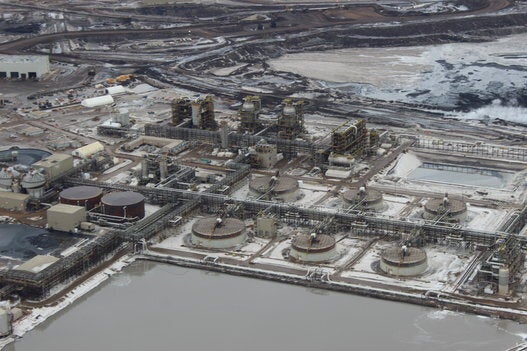
Once upon a time Alberta was the province to which Canadians flocked in search of high-wage jobs and an excellent chance of employment.
But experts say that is no longer the case.
The Canadian Association of Petroleum Producers (CAPP) says the energy capital of Canada has already lost 35,000 oilpatch jobs since oil prices started to fall and the economy took a downturn.
Those job losses, says CAPP, include 10,000 in exploration and production and 25,000 in the oil services sector.
"Today they are laying off people that they view as very valuable. I have CEOs that have pulled pop, free pop out of the office, because they can save $40,000 across the company and that's half a job," CAPP CEO Tim McMillan told CBC News.
CAPP spokeswoman Chelsie Kalssen told the Calgary Herald the number comes from working with the Canadian Association of Oilwell Drilling Contractors, Statistics Canada, as well as reviewing their own layoff tabulations.
A look at some of the major layoffs announced in Alberta this year. Story continues below the slideshow:
In the latest round of mass layoffs, two oil and gas companies cut a total of 900 jobs Tuesday, mostly in Calgary.
Penn West Petroleum is cutting its workforce by 35 per cent for a loss of over 400 full-time employees and contractors.
And ConocoPhillips Canada plans to lay off 400 employees and 100 contractors, for a 15 per cent workforce reduction.
To make matters worse, economists are predicting further job losses in the coming months.
Todd Hirsch, chief economist with ATB Financial, told the Calgary Herald that Albertans should expect cuts following September's Labour Day weekend.
"A lot of these companies in Calgary, they’ve been able to hold on because of their hedging program and they’ve hedged their oil sales on that future price, but their hedging programs are expiring in the fall and that’s the problem with hedging programs. At a certain point they expire and you have to make some tough choices around that. And word is that a lot of these companies, their hedging programs are running out. We’re sitting at $45 oil and very, very volatile prices. There is a darker reality setting in for these producers and they’re going to have to lay off people."
John Stephenson, president and CEO of asset management firm Stephenson & Company, agrees.
"It’s a boom and bust cycle. It’s very cyclical. When times are good, you can’t get enough people. When times are bad, you can’t shed them fast enough," he told BNN.
"It makes absolute sense. It would be unconscionable for companies to keep people employed given the draw down in the price of crude oil and natural gas."
The one bright spot in Alberta's employment outlook, perhaps, has been that while the energy industry is shedding jobs, other industries have been creating jobs at an equal rate, keeping Alberta's job growth mostly flat this year.


